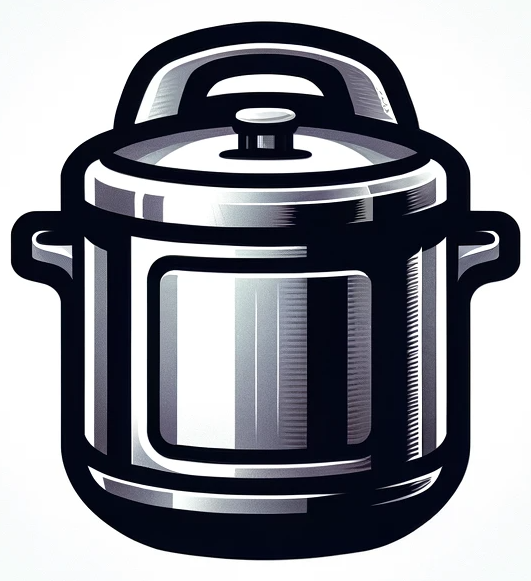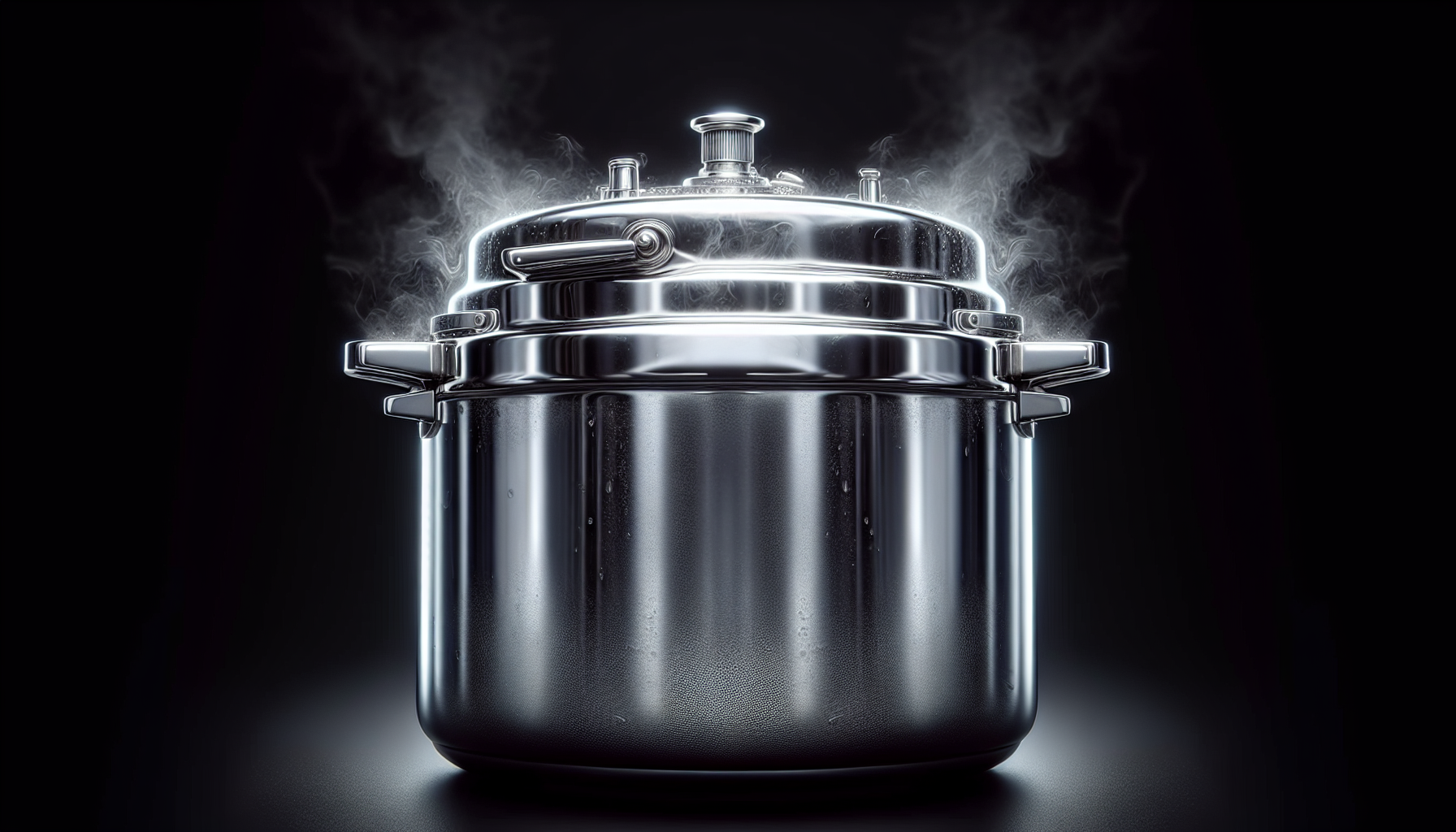Imagine this scenario: you’ve just set your pressure cooker to work its magic on a delicious meal, but suddenly you remember you have to run an errand. Should you leave the house with the pressure cooker on? This is a common question that many people ponder. In this article, we will explore the safety implications of leaving the house with a pressure cooker running, providing you with the information you need to make an informed decision. So, grab a cup of tea and let’s dive into this burning question.
CHECK OUT PRESSURE COOKERS ON AMAZON
What is a pressure cooker?
Basic explanation
A pressure cooker is a kitchen appliance that uses steam and high pressure to cook food quickly. It works by creating a sealed environment, which raises the boiling point of water and allows food to cook faster. The lid locks tightly to prevent any steam or pressure from escaping during the cooking process.
How it works
The principle behind a pressure cooker is quite simple. When the cooker is heated, the water inside turns into steam, increasing the pressure inside the pot. This increased pressure raises the boiling point of water, resulting in higher cooking temperatures. The steam generated inside the cooker helps to cook food evenly and effectively, reducing cooking time by up to 70%.
CHECK OUT PRESSURE COOKERS ON AMAZON
Safety concerns with pressure cookers
High-pressure environment
One of the main safety concerns with pressure cookers is the high-pressure environment they create. The tightly sealed lid and build-up of steam inside the cooker can lead to significant pressure levels. This pressure can pose a risk if the cooker is not used correctly or if it malfunctions.
Risk of explosion
Improper handling or misuse of a pressure cooker can potentially lead to an explosion. If the pressure is not released properly or if the cooker is filled beyond its capacity, the pressure buildup can become dangerous. However, modern pressure cookers are designed with safety features to minimize the risk of explosions.
Potential for burns
Steam and hot food can cause burns if not handled with care. When using a pressure cooker, there is a higher risk of burns due to the higher temperatures and pressure involved. Contact with hot steam or coming into direct contact with the hot surfaces of the cooker can result in serious burns.
Food safety concerns
While pressure cookers can effectively cook food faster, improper handling or cooking can pose food safety risks. It is essential to ensure that food is cooked thoroughly and reaches the appropriate internal temperature to prevent foodborne illnesses. Failure to follow proper cooking times and techniques can lead to undercooked food or contamination.
Factors to consider before leaving the house
Type of pressure cooker
There are various types of pressure cookers available in the market, including stovetop and electric models. It is important to choose a pressure cooker that is reputable and has built-in safety features. Electric pressure cookers often come with programmable settings and automatic shut-off features, while stovetop pressure cookers require manual monitoring.
Safety features
When selecting a pressure cooker, it is essential to consider the safety features it offers. Look for features such as automatic shut-off systems, pressure release valves, and locking mechanisms. These features play a crucial role in ensuring the safe operation of the cooker and reducing the risk of accidents.
Cooking time
Before leaving the house with the pressure cooker on, consider the cooking time required for the recipe you are preparing. Some dishes may require longer cooking times, which means the pressure cooker will be operating for an extended period. Assess whether it is feasible to leave the house for the duration of the cooking time, taking into account any potential risks or safety concerns.
Experience level
Your experience level with using pressure cookers should also be considered before leaving the house with one on. If you are new to pressure cooking or have limited experience, it is generally recommended to stay in the kitchen and closely monitor the cooking process. As you become more familiar and comfortable with the appliance, you may feel more confident about leaving it unattended for shorter periods.
Understanding safety features
Automatic shut-off
Many modern pressure cookers feature an automatic shut-off system that activates when the cooking time is complete or if the pressure inside exceeds a safe level. This feature helps to prevent overcooking and maintains the safety of the cooker, even if left unattended.
Pressure release valve
The pressure release valve is a crucial safety feature in pressure cookers. It allows for the controlled release of excess pressure during and after the cooking process. By releasing the pressure safely, it reduces the risk of explosions or accidents occurring.
Locking mechanisms
Pressure cookers are equipped with locking mechanisms that ensure the lid remains tightly sealed during cooking. These locks prevent the lid from being opened while the pressure inside is still high, reducing the risk of potential burns or accidents. It is important to understand how these locking mechanisms work and ensure they are properly engaged before operating the cooker.
Tips for ensuring safety while using a pressure cooker
Read the instruction manual
Before using a pressure cooker, it is crucial to thoroughly read and understand the instruction manual. The manual provides valuable information on how to safely operate the cooker, including cooking times, pressure release procedures, and maintenance guidelines.
Never overload the cooker
It is important to follow the manufacturer’s guidelines and never exceed the maximum filling capacity of the pressure cooker. Overfilling can interfere with the proper functioning of the cooker and increase the risk of accidents. Leaving enough space for the food and liquid to expand during cooking is necessary to prevent any overflow or pressure buildup.
Use appropriate cooking time and temperature
Each recipe may have different recommended cooking times and temperatures. It is essential to follow the specific instructions for the recipe you are preparing to ensure food safety and optimal cooking results. Cooking times can vary based on the type and quantity of food being cooked, so it is important to adjust accordingly.
Ensure proper sealing of the cooker
Before starting the cooking process, ensure that the lid is properly sealed onto the pressure cooker. A faulty seal can lead to steam and pressure leaks, compromising the effectiveness and safety of the cooker. Take the time to check the seal and ensure it is in good condition before proceeding.
Stay in the kitchen if possible
If you are using a pressure cooker for the first time or are unsure about leaving it unattended, it is best to stay in the kitchen while it is in operation. This allows you to monitor the cooking process, observe any changes in pressure or temperature, and address any issues that may arise.
Avoid distractions
When using a pressure cooker, it is important to minimize distractions in the kitchen. Distractions can lead to forgetfulness or neglect in monitoring the cooker, increasing the risk of accidents. Focus on the cooking process, follow safety protocols, and give your full attention to the appliance to ensure safe operation.
Leaving the house with a pressure cooker on
Factors to consider
Before leaving the house with a pressure cooker on, you must consider various factors. These include the type of pressure cooker you are using, the cooking time required for the recipe, your experience level, and the safety features available on your cooker. Assessing these factors will help you make an informed decision about whether it is safe to leave the cooker unattended.
Is it recommended?
While some pressure cookers are designed with safety features that allow for unattended cooking, it is generally not recommended to leave the house with a pressure cooker on. The high pressure and potential risks involved make it safer to stay nearby and monitor the cooking process. It is always better to prioritize safety and be present during the operation of the cooker.
Alternative options
If you need to leave the house but still want to cook a recipe that requires a pressure cooker, consider alternative cooking methods. Slow cookers or crock pots are excellent options for recipes that require longer cooking times. These appliances operate at lower temperatures and do not pose the same risks associated with pressure cookers. Plan your meals accordingly to ensure you have the necessary time to safely cook your food.
Importance of practicing caution
Potential risks
While pressure cookers offer a convenient way to cook meals quickly, it is essential to be aware of the potential risks involved. The high pressure and temperatures can lead to accidents, burns, or even explosions if proper precautions are not taken. Practicing caution and following safety guidelines is crucial to minimize these risks.
Prioritizing safety first
When it comes to using a pressure cooker, safety should always be the top priority. It is important to be aware of the potential risks and take all necessary precautions to ensure the safe operation of the appliance. By prioritizing safety and practicing caution, you can enjoy the benefits of pressure cooking without compromising your well-being.
Common misconceptions about pressure cookers
Pressure cookers are time bombs
One common misconception about pressure cookers is that they are time bombs waiting to explode. While accidents can occur if not used properly, modern pressure cookers are designed with safety features to prevent explosions or accidents. When used correctly and in accordance with the manufacturer’s instructions, pressure cookers are a safe and efficient cooking tool.
Unsafe to leave unattended
Another misconception is that it is unsafe to leave a pressure cooker unattended. While it is generally recommended to stay in the kitchen while cooking, there are pressure cookers available with advanced safety features that allow for unattended cooking. However, it is important to assess the specific cooker, recipe, and personal circumstances before making the decision to leave it unattended.
Final thoughts
Personal responsibility
When it comes to using a pressure cooker, personal responsibility is key. It is essential to educate yourself on its proper usage, safety features, and recommended practices. By understanding the risks and taking necessary precautions, you can ensure the safe and effective use of your pressure cooker.
Making informed decisions
When deciding whether or not to leave the house with a pressure cooker on, it is important to make informed decisions based on the specific circumstances. Consider factors such as the cooking time, safety features, personal experience, and the type of pressure cooker being used. By carefully assessing these factors, you can determine the safest course of action and enjoy the convenience of pressure cooking with peace of mind.

